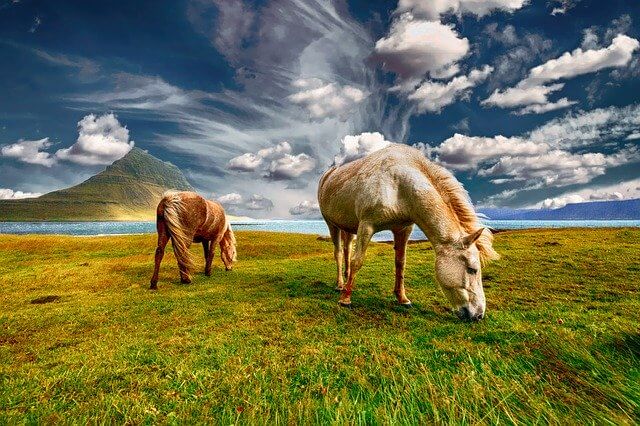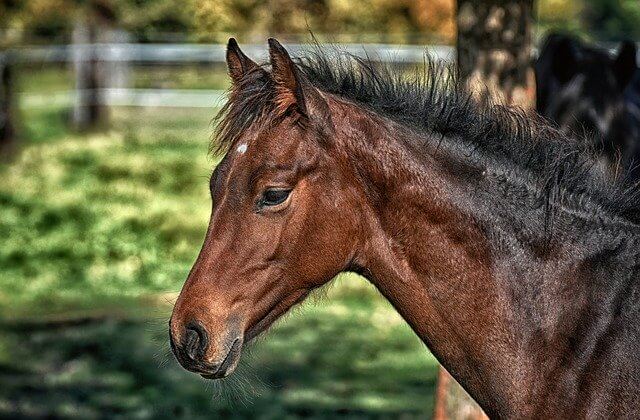Dive into the captivating realm of horses as we uncover 10 defining characteristics and intriguing facts about these magnificent creatures. Learn about their unique traits, behavior, and fascinating insights into their extraordinary nature.
The horse is a mammal belonging to the family of equidae. There are 86 different races in the world. Three groups of wild mammals are included in the horse family: in the first group are the zebras (originating in Africa); in the second we find the donkeys (including the African wild ass, the kiang and the onager who live in Asia) and, finally, the horses themselves, with the scientific name “Equus ferus caballus”.
Horses can be domesticated, those that man managed to tame with different purposes are very useful in livestock or sport, as well as in psychological and physical rehabilitation therapies (equinotherapy) and for transport in certain rural contexts. At the same time, we find horses that live in a wild state.
Among the types of wild horses we find mainly Tarpan and Przewalski’s horse. The first is native to a region located between Eastern Europe and Mongolia, and became extinct at the beginning of the 19th century. Meanwhile, Przewalski’s horse is the only wild species we can find today. The females are called mares, while the male calf is called a foal and the female filly is raised.

Characteristics Of Horses
1. Physical characteristics
Horses are animals that physically have a large bearing. Its neck is characterized by being long, including bristles of important length and an extremely elongated head with two erect ears. The tail also stands out for its length.
The height of a horse is measured from the cross to the ground and will vary in correlation to the race; some reach heights of 185 centimeters. Also the weight will depend on the race or variety, oscillating mainly between 390 and 1,000 kilograms.
2. Feeding
Feeding is an essential aspect of horse care, and understanding their feeding requirements is crucial for their overall health and well-being. Here are ten characteristics of horses related to feeding:
- Herbivorous diet: Horses are herbivores, meaning they primarily consume plant-based materials, such as grasses, hay, and other forages.
- Grazing animals: Horses are adapted to graze for long periods throughout the day. Their digestive system is designed to process small amounts of food consistently, rather than consuming large meals.
- Roughage requirement: Horses require a high-fiber diet to maintain a healthy digestive system. Good-quality hay or pasture should be the foundation of their diet.
- Forage availability: Horses should have access to forage (pasture or hay) for the majority of their day, mimicking their natural grazing behavior.
- Water intake: Adequate clean and fresh water should be available to horses at all times. They require approximately 5-10 gallons of water per day, depending on their size, activity level, and environmental conditions.
- Nutritional balance: Horses need a balanced diet that includes carbohydrates, proteins, fats, vitamins, and minerals. Concentrates like grains or commercial horse feeds can supplement their forage diet, but they should not replace it entirely.
- Feeding routine: Horses benefit from a consistent feeding schedule. Regular feeding times help maintain their digestive health and reduce stress.
- Portion control: The amount of feed a horse requires depends on its size, age, activity level, and overall health. Overfeeding or underfeeding can lead to weight management issues and other health problems.
- Slow feeding: Some horses tend to eat quickly, which can lead to digestive issues or boredom. Slow feeders, such as hay nets or grazing muzzles, can help regulate their eating pace and extend the time it takes for them to consume their forage.
- Dietary adjustments: Horses’ feeding requirements may change based on factors such as age, workload, pregnancy, or health conditions. Consulting with a veterinarian or equine nutritionist can help determine any necessary dietary adjustments.
It’s important to note that individual horses may have specific dietary needs, and it’s always best to consult with a qualified equine professional to create a feeding plan tailored to your horse’s specific requirements.
3. Life expectancy
The life of the wild horses extends until the 25 years approximately, whereas the domestic ones can live about 40 years. It should be remembered that until 4 years of age these mammals have not reached adulthood, only from then on are they prepared to be tamed and assembled.
4. Habitat
Wild horses, scarce due to hunting and the constant pursuit of man, are found in deserts, savannas and grasslands of Asia and Africa. Domesticated breeds can be found at all points of the globe.
5. Reproduction
How do horses breed? The gestation takes place over 11 months, and only on exceptional occasions does the birth of more than one baby occur. Around 4 years of age, horses reach sexual maturity.
Domestic horses have problems in the sexual coupling, sometimes it is necessary that mamporreros direct the member of the horse to fecundate the female.
6. Sports use
Nowadays horses are used for different sports activities thanks to their special conditions, including jumping, equestrian, polo, dressage, charreria, duck, cowboy dressage and other varieties.

7. Care
The horse needs a space in which he feels comfortable, vaccination periodically and internal and external deworming. It also requires dental care: it is necessary that every six months a veterinarian lime the odontofitos that are commonly formed. In addition, the veterinarian should perform a general review at least twice a year.
8. Character
The horse communicates with the other members of the pack, transmitting their emotions. They also establish a hierarchy of domain without violence. They are not aggressive and choose to flee before fighting.
9. Types of temperament
Temperament refers to the innate behavioral and emotional traits exhibited by individuals. In the context of horses, different temperaments can affect their trainability, behavior, and suitability for certain activities. While every horse is unique, here are some common types of temperaments observed in horses:
- Calm/Stoic: These horses have a naturally relaxed and steady demeanor. They are generally easygoing, level-headed, and less reactive to external stimuli.
- Spirited/Energetic: Horses with a spirited temperament tend to be energetic, lively, and sometimes high-spirited. They may exhibit more enthusiasm and energy in their actions.
- Bold/Confident: Bold horses are self-assured, fearless, and often exhibit a high level of confidence. They are less likely to be easily startled or spooked by new or challenging situations.
- Nervous/Anxious: Horses with a nervous or anxious temperament may be more prone to worry, overreact to stimuli, and exhibit signs of anxiety or tension. They may require extra patience and gentle handling to build trust and confidence.
- Sensitive/Responsive: These horses are highly responsive to cues and may have heightened sensitivity to their environment. They tend to be quick learners but may also react strongly to subtle signals or pressures.
- Lazy/Laid-back: Horses with a lazy temperament are generally less inclined to be energetic or motivated. They may require more encouragement and motivation to engage in activities or training.
- Dominant/Assertive: Dominant horses exhibit a strong sense of assertiveness and may display a higher level of confidence and independence. They may require clear boundaries and consistent handling to establish respect and obedience.
- Submissive/Passive: Submissive horses are more inclined to yield to pressure and may have a lower threshold for assertiveness. They may be more compliant and willing to follow directions.
It’s important to note that temperament can vary among individual horses, and each temperament type has its own strengths and considerations. Understanding a horse’s temperament can help in selecting appropriate training methods, activities, and handling techniques to ensure a harmonious partnership and overall well-being.
10. Displacement
The horses stand out for their speed, ductility and elegance of movement, so some are used in jumping competitions, races and exhibitions.
These animals have three ways of moving: by step, at a jog (they can reach speeds of 15 kilometers per hour) and at a gallop (they reach 65 kilometers per hour).